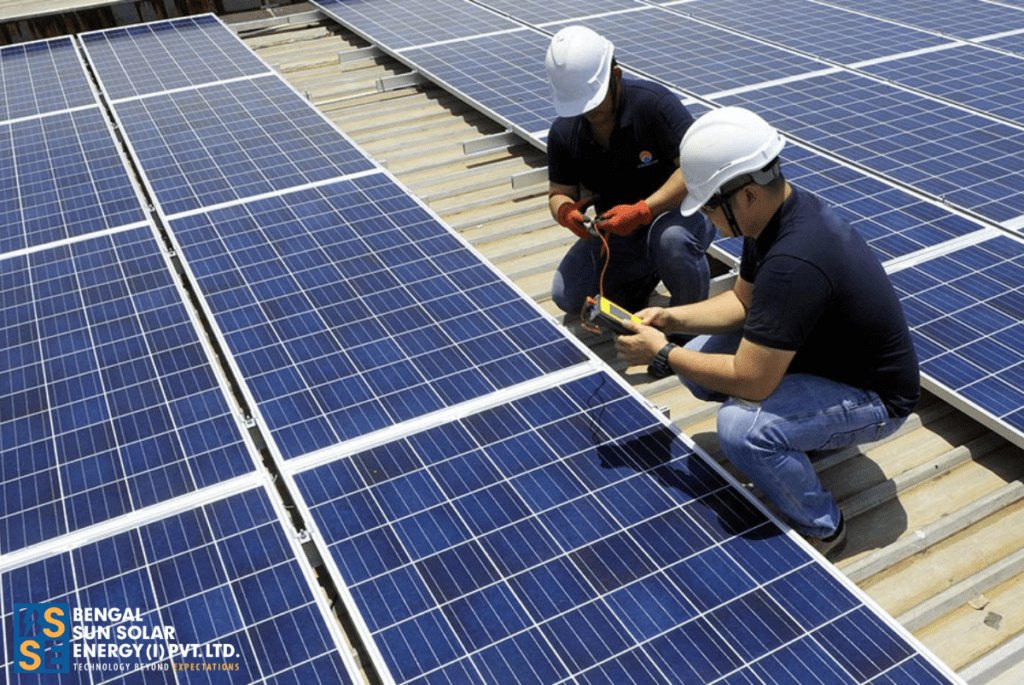Solar power is usable energy generated from the sun in the form of electric or thermal energy. Solar energy is captured in a variety of ways, the most common of which is photovoltaic solar panels that convert the sun’s rays into usable electricity. Aside from using photovoltaics generate electricity, solar energy is commonly used in thermal applications to heat indoor spaces or fluids. Residential and commercial property owners can install solar hot water systems and design their buildings with passive solar heating in mind to fully take advantage of the sun’s energy with solar technology.
Solar panels are installed at three main scales: residential, commercial, and utility. Residential-scale solar is typically installed on rooftops of homes or in open land (ground-mounted) and is generally between 5 and 20 kilowatts (kW), depending on the size of a property. Commercial solar energy projects are generally installed at a greater scale than residential solar. Though individual installations can vary greatly in size, commercial-scale solar serves a consistent purpose: to provide on-site solar power to businesses and non-profits. Finally, utility-scale solar projects are typically large, several megawatt (MW) installations that provide solar energy to a large number of utility customers.
As a company Bengal Sun Solar Energy (I) Pvt. Ltd is always involved in educating and advocating the benefits of using and applying Solar Energy as the best alternative to fossil fuel. They are one of the best solar energy company in Kolkata.
How does solar energy work?
A solar panel (also known as a solar module) consists of a layer of silicon cells, a metal frame, a glass casing unit, and wiring to transfer electric current from the silicon. Silicon is a nonmetal with conductive properties that allow it to absorb and convert sunlight into usable electricity. When light hits a silicon cell, the light causes electrons in the silicon to be set in motion, initiating a flow of electric current. This is known as the “photovoltaic effect,” and it describes the general functionality of solar panel tech.
The science of generating electricity with solar panels boils down to this photovoltaic effect. It was first discovered in 1839 by Edmond Becquerel and can be thought of as a property of specific materials (known as semiconductors) that allows them to create an electric current when they are exposed to sunlight.
The photovoltaic process works through the following broad steps:
- The silicon photovoltaic solar cell absorbs solar radiation
- When the sun’s rays interact with the silicon cell, electrons begin to move, creating a flow of electric current
- Wires capture and feed this direct current (DC) electricity to a solar inverter to be converted to alternating current (AC) electricity
A brief history of solar power
In 1954, Bell Labs developed the first silicon photovoltaic cell. Although solar energy had previously been captured and converted into usable energy through various methods, only after 1954 did solar power begin to become a viable source of electricity to power devices over extended periods of time. The first solar cells converted solar radiation to electricity at efficiency of 4 percent – for reference, many widely available solar panels today can convert sunlight to solar power at above 20 percent efficiency, a number constantly on the rise.
The cost of solar energy
Concurrent with an increase in solar panel efficiency, the cost of solar energy has fallen substantially. In the last decade alone, the cost of a solar panel installation fell over 60 percent, and many industry experts predict that prices will continue to fall in the years to come:
